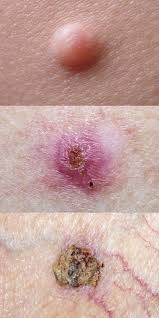
Skin cancer is one of the most common types of cancer worldwide, and early detection plays a crucial role in successful treatment. Once diagnosed, the next big decision is choosing the most effective treatment method. From radiation therapy and surgery to topical treatments, the options vary depending on the type, size, location, and stage of the cancer. Understanding these treatments helps patients make informed choices in consultation with their healthcare providers.
The Importance of Tailored Treatment
Every case of skin cancer is unique. Factors such as the specific type of cancer (e.g., basal cell carcinoma, squamous cell carcinoma, or melanoma), the cancer’s depth, and the patient’s overall health all play a role in deciding the best treatment. Dr Shaun Segal, an experienced skin cancer specialist, emphasizes that “personalized care ensures the highest chance of success while minimizing side effects.” This approach highlights why treatment decisions should never be one-size-fits-all.
Let’s explore the three common treatment options — radiation, surgery, and topical therapy — to understand when and why each may be recommended.
Surgery: The Gold Standard for Most Skin Cancers
Surgical removal is often the first choice, particularly for basal cell carcinoma and squamous cell carcinoma. The goal is simple: completely remove the cancerous tissue while preserving as much healthy skin as possible.
Types of Surgical Procedures
- Excisional surgery: This involves cutting out the tumor along with a margin of normal skin to ensure no cancer cells are left behind.
- Mohs micrographic surgery: This precise technique is especially useful for skin cancers on the face or other sensitive areas. The surgeon removes the cancer layer by layer, examining each under a microscope until no abnormal cells remain.
Benefits of Surgery
Surgery offers high cure rates, especially when the cancer is caught early. Mohs surgery, for instance, has a success rate of up to 99% for certain skin cancers. Recovery is typically quick, although some cases may require reconstructive procedures to restore appearance and function.
When Surgery May Not Be Ideal
In some cases, surgery might not be feasible. For instance, if the tumor is in a location where surgery could cause significant disfigurement or functional problems, or if the patient has health conditions that make surgery risky, other options may be explored.
Radiation Therapy: A Non-Invasive Option
Radiation therapy uses targeted beams of energy to destroy cancer cells. It is often recommended for patients who cannot undergo surgery or for cancers in locations where surgery might be difficult.
When Is Radiation Therapy Used?
- For skin cancers that are hard to operate on due to their location.
- For elderly patients or those with medical conditions that make surgery unsafe.
- As a follow-up treatment after surgery to reduce the risk of recurrence.
Advantages of Radiation Therapy
Radiation therapy is non-invasive and can spare patients from surgical scars or complex reconstruction. It can also be very effective at controlling or eliminating cancer cells.
Limitations of Radiation Therapy
However, radiation treatment typically requires multiple sessions over several weeks. Side effects can include redness, irritation, and long-term skin changes in the treated area. In addition, radiation may not be the best choice for younger patients because of potential long-term risks.
Topical Therapy: A Solution for Superficial Skin Cancers
Topical treatments involve applying creams or gels directly to the skin cancer. These therapies are generally reserved for very early-stage or superficial cancers, such as some basal cell carcinomas or pre-cancerous lesions like actinic keratoses.
Common Topical Treatments
- Immunotherapy creams: These stimulate the body’s immune system to attack cancer cells.
- Chemotherapy creams: These contain medications that destroy cancer cells at the site.
Pros and Cons of Topical Therapy
Topical therapy is non-invasive and can often be done at home under a doctor’s supervision. It avoids surgical scars and has minimal impact on surrounding healthy tissue. However, this approach requires strict adherence to the treatment schedule and may take several weeks or months to see results. Side effects like skin irritation, redness, or peeling are common.
Topical therapy is generally not suitable for deeper or more aggressive skin cancers.
How to Choose the Right Treatment?
The right treatment depends on several factors:
- Type of skin cancer: Basal cell carcinomas, squamous cell carcinomas, and melanomas all behave differently and require different approaches.
- Location and size of the tumor: Tumors in sensitive or visible areas may need more careful planning.
- Depth of invasion: More invasive cancers may require surgery or radiation over topical treatments.
- Patient’s overall health and preferences: Age, medical history, and personal priorities matter.
A thorough discussion with a dermatologist or oncologist is essential. Many patients benefit from a multidisciplinary team approach to weigh all the options carefully.
Combining Treatments for Best Results
Sometimes, doctors recommend combining treatments to achieve the best outcome. For example, surgery might be followed by radiation therapy if there is a concern about remaining cancer cells. Similarly, topical therapy might be used after surgery to treat any microscopic disease that remains.
Final Thoughts
Choosing the right skin cancer treatment is a significant decision that should be based on medical advice tailored to the individual. Surgery, radiation, and topical therapy each have their strengths and limitations. By working closely with a qualified specialist, patients can select a treatment plan that not only targets the cancer effectively but also considers cosmetic results, recovery time, and personal preferences.
Regular skin checks, early diagnosis, and a proactive approach to treatment can make all the difference in the fight against skin cancer. If you or someone you know is facing this diagnosis, don’t hesitate to seek expert guidance to ensure the best possible outcome.
https://theglobalnewz.com/wp-admin